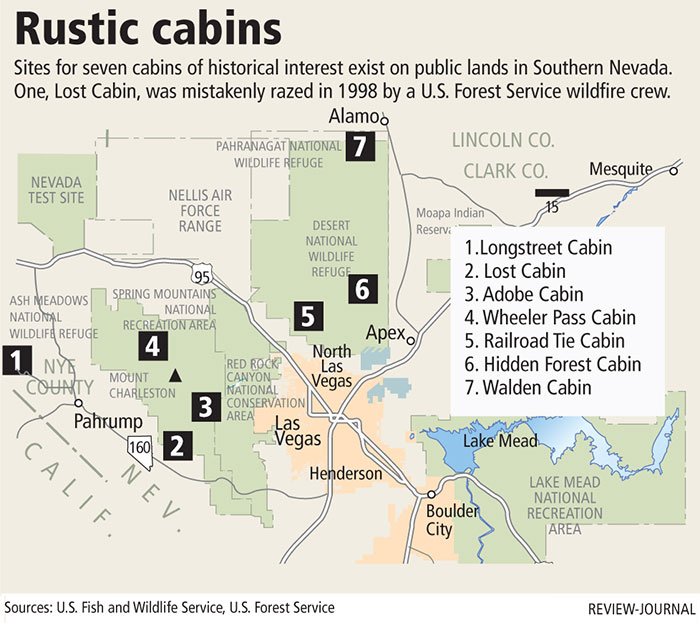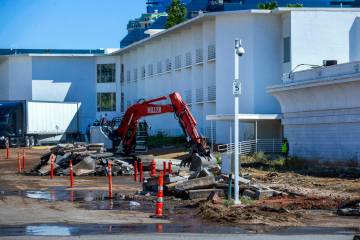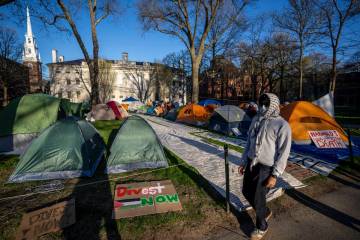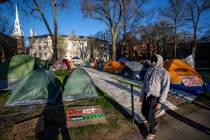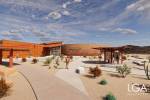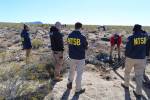Seven sites, sheltered trappers, bootleggers
At least seven sites for rustic cabins built by settlers or Paiutes in the late 1800s and early 1900s remain in Southern Nevada at wildlife refuges and on public lands in or around the Spring Mountains.
One, Lost Cabin, built by Paiute descendants Buster Wilson or his legendary father, Tweed, in the late 1920s, was mistakenly torn down by a U.S. Forest Service wildland fire crew in 1998.
Lost Cabin, along with another adobe cabin in a higher elevation of the Spring Mountains, was used by the Wilsons as shelter for cattle roundups.
Those and five other cabins of historical interest were built from materials such as stones, logs and mud from areas near their locations. Over the years, some have been repaired and upgraded.
Historians say the cabins had a variety of uses and had been occupied at times by prospectors, bootleggers, hunters, trappers, cowboys, homesteaders and outlaws.
The cabins and rough estimates of their construction dates are:
• Longstreet Cabin, built with stones, lime-based mortar and timber in 1896 by legendary frontiersman Jack Longstreet. He lived at the site with his Paiute wife, Susie, near a spring in Ash Meadows from 1895 to 1899.
Longstreet, who raised horses, was known for skirting the law. He designed the cabin with an escape hole where he would hide to evade posses.
• Lost Cabin, wedged into a hillside at the foot of a spring, was a lower-elevation shelter for tending cattle.
• Adobe Cabin, probably built by Tweed Wilson and his brother, Jim, or their stepfather, James Bernard "Twilson" Wilson, who died in 1906. Historians believe the mud-and-wood cabin is vintage late 1800s or early 1900s and had multiple uses associated with ranching and distilling moonshine that was sold to miners.
• Wheeler Pass Cabin, a notched-log structure possibly associated with the three Tecopa charcoal kilns that were probably built by English or Welsh laborers in 1877 of limestone chunks and slabs. The kilns, two of which were toppled by vandals and stone robbers in 1968, had been used to make charcoal for Jonas Osborne's silver ore smelter, 50 miles away in Tecopa, Calif. The last standing kiln was restored in October 2004, but winter rains and heavy snowfall caused it to collapse about two months later.
• Railroad Tie Cabin, built at Corn Creek with ties from the Las Vegas and Tonopah Railroad around 1919 that George and Clara Richardson's son-in-law, Perry Young, hauled to the site after the railroad ceased operations.
• Hidden Forest Cabin, constructed in the Sheep Range by an unknown builder probably in the early 1900s, although some historians estimate it could have been built in the late 1880s or 1890s. The cabin, made of notched Ponderosa pine logs is being restored. It was used by hunters, trappers and probably by bootleggers during Prohibition.
• Walden Cabin, at Pahranagat National Wildlife Refuge, was built of stone perhaps as early as the 1870s by Fred Walden, who was later killed by robbers who wanted his gold and horses, said U.S. Fish and Wildlife Service historian Louann Speulda-Drews. The cabin is undergoing restoration.
Contact reporter Keith Rogers at krogers @reviewjournal.com or 702-383-0308.
Audio Slideshow



